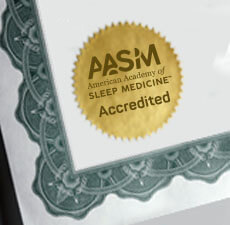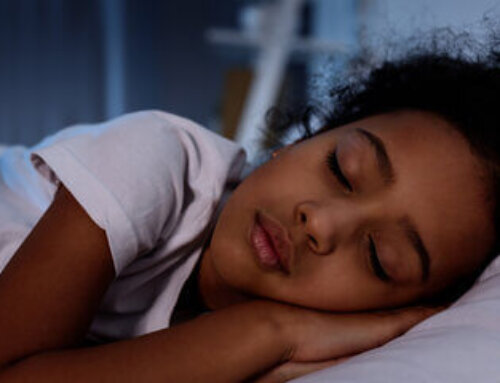Westchester, Ill. – A study in the Sept.1 issue of the journal SLEEP shows that current or past exposure to workplace bullying is associated with increased sleep disturbances. Associations also were found between observed bullying and sleep disruption, indicating that bullying has detrimental effects even when it is experienced indirectly.
The study shows a high prevalence of workplace bullying, with 11 percent of women and nine percent of men experiencing “hostile behavior” in the work environment at least weekly and for at least six months during the previous 12 months. After adjustment for covariates such as age, occupation, weekly work hours and depressive symptoms, exposure to bullying was significantly associated with self-reported sleep disturbances. The adjusted odds ratio of having disturbed sleep was more than two times higher in men who currently were experiencing workplace bullying (OR=2.29) or had been exposed to daily or almost daily bullying (OR=2.39); women were nearly two times more likely to report having sleep disturbances if they had experienced daily or almost daily bullying (OR=1.73) or had been exposed to bullying for more than five years (OR=1.87).
Thirty-two percent of women and 31 percent of men also reported that they had observed bullying in the workplace in the previous 12 months. The adjusted odds ratio of having disturbed sleep was 60 percent higher in men and 20 percent higher in women who only observed bullying, and it was more than two times higher in men (OR=2.38) and nearly two times higher in women (OR=1.81) who both observed and experienced bullying.
Principal investigator Isabelle Niedhammer, PhD, epidemiologist and researcher at the UCD School of Public Health & Population Science at the University College Dublin in Ireland, said that exposure to any form of violence or harassment at the workplace may strongly increase the risk of having sleep disturbances.
“Workplace bullying may be considered as one of the leading job stressors and would be a major cause of suicide and other health-related issues,” said Niedhammer. “Our study underlines the need to better understand and prevent occupational risk factors, such as bullying, for sleep disorders.”
The cross-sectional survey was performed in 2004 among the general working population in the southeast of France. The study population was a random sample of 3,132 men and 4,562 women with a mean age of 40 years. Workplace bullying was evaluated using the French version of the Leymann Inventory of Psychological Terror, which measures the experience of 45 forms of bullying. Participants also reported whether or not they perceived themselves as being exposed to “hostile behavior on the part of one or more persons in the work environment that aim continually and repeatedly to offend, oppress, maltreat, or to exclude or isolate over a long period of time.”
Sleep disturbances – defined as either trouble initiating sleep or trouble returning to sleep after a premature awakening – were reported by a self-administered questionnaire. Results indicate that 22.3 percent of women and 17.08 percent of men reported having “some or a great deal of trouble” sleeping.
According to the American Academy of Sleep Medicine, the presence of a sleep disturbance in association with an identifiable stressor is the essential feature of adjustment insomnia. Common stressors include occupational stress and disputes in interpersonal relationships. The sleep disturbance may be accompanied by waking symptoms such as anxiety, worry, depression, muscle tension and headaches. Typically adjustment insomnia has a short course that lasts no more than three months, but the sleep disturbance may persist if the precipitating stressor fails to resolve or if the individual is unable to adapt to a chronic stressor. Among adults the one-year prevalence of adjustment insomnia is likely to be in the range of 15 percent to 20 percent.
The authors caution that the cross-sectional design of the study did not allow them to evaluate causality. They conclude, however, that the association between workplace bullying and sleep disturbances is strong, and efforts to prevent bullying in the work environment should be increased.
More information about adjustment insomnia is available from the AASM on SleepEducation.com.
SLEEP is the official journal of the Associated Professional Sleep Societies, LLC (APSS), a joint venture of the American Academy of Sleep Medicine and the Sleep Research Society.The APSS publishes original findings in areas pertaining to sleep and circadian rhythms. SLEEP, a peer-reviewed scientific and medical journal, publishes 12 regular issues and 1 issue comprised of the abstracts presented at the SLEEP Meeting of the APSS.
For a copy of the study, “Workplace Bullying and Sleep Disturbances: Findings from a Large Scale Cross-Sectional Survey in the French Working Population,” or to arrange an interview with the study’s author, please contact Kelly Wagner, AASM public relations coordinator, at (708) 492-0930, ext. 9331, or kwagner@aasm.org.
AASM is a professional membership organization dedicated to the advancement of sleep medicine and sleep-related research. As the national accrediting body for sleep disorders centers and laboratories for sleep related breathing disorders, the AASM promotes the highest standards of patient care. The organization serves its members and advances the field of sleep health care by setting the clinical standards for the field of sleep medicine, advocating for recognition, diagnosis and treatment of sleep disorders, educating professionals dedicated to providing optimal sleep health care and fostering the development and application of scientific knowledge.
###








